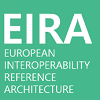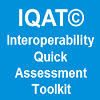Recommendation 14 | Principle 7: Inclusion and accessibility
Ensure that all European public services are accessible to all citizens, including persons with disabilities, the elderly and other disadvantaged groupd. For digital public services, public administrations should comply with e-accessibility specifications that are widely recognised at European or international level.
Solutions
| List of all available solutions that implement this recommendation |
|---|

|
eID can be seen as enabling the access to public services to all citizens, like for instance those with limited mobility. |

|
The EIRA EIF view contains the principle of accessibility. |

|
eSignature can be seen as enabling the access to public services to all citizens, like for instance those with limited mobility. |

|
Question D12 of the Service Delivery section of the IMAPS questionnaire assesses the extent to which public services are accessible to all parties. |

|
The IQAT assesses to which extent to solutions being tested is accessible to all users (assesses the level of e-Accessibility). |

SIMAPS solution v1.0.0 |
Question D1 of the Service Delivery section of the SIMAPS questionnaire assesses the semantic behavioural interoperability specifications of the data, information and knowledge delivered by a public service, by determining how easily the data delivered by another public service can be accessed by systems compliant with e-accessibility specifications. |



